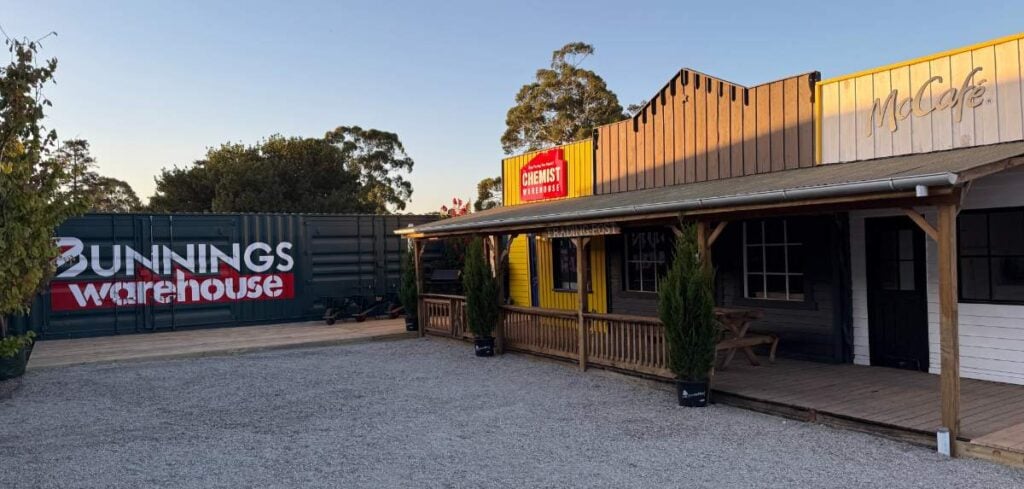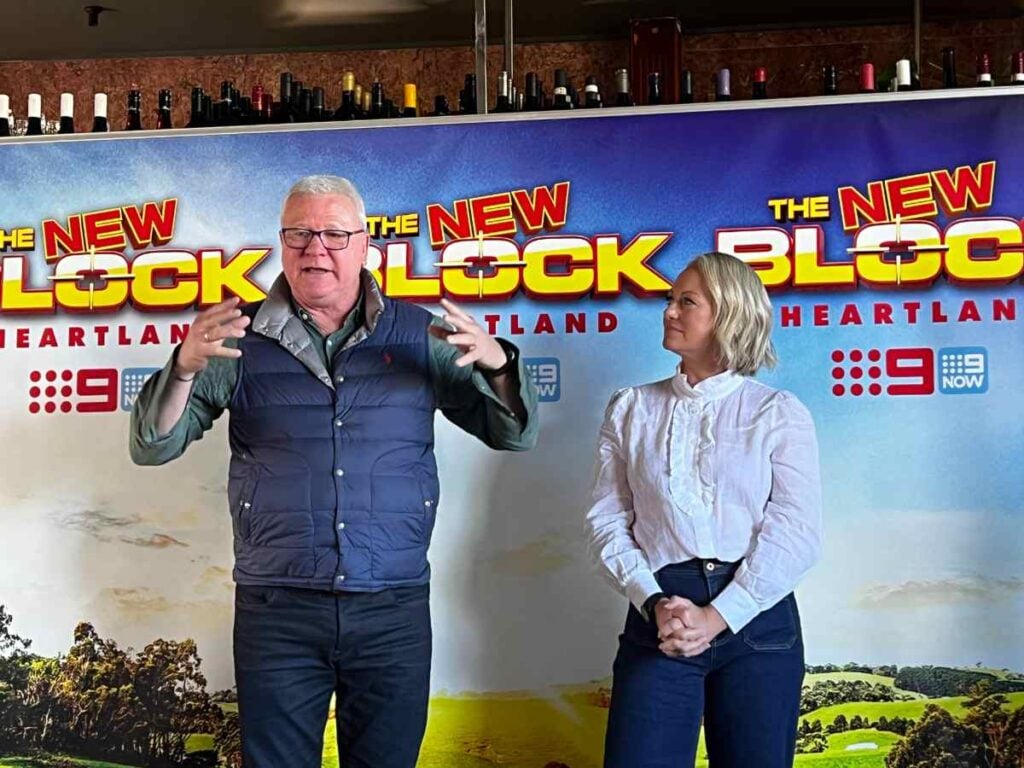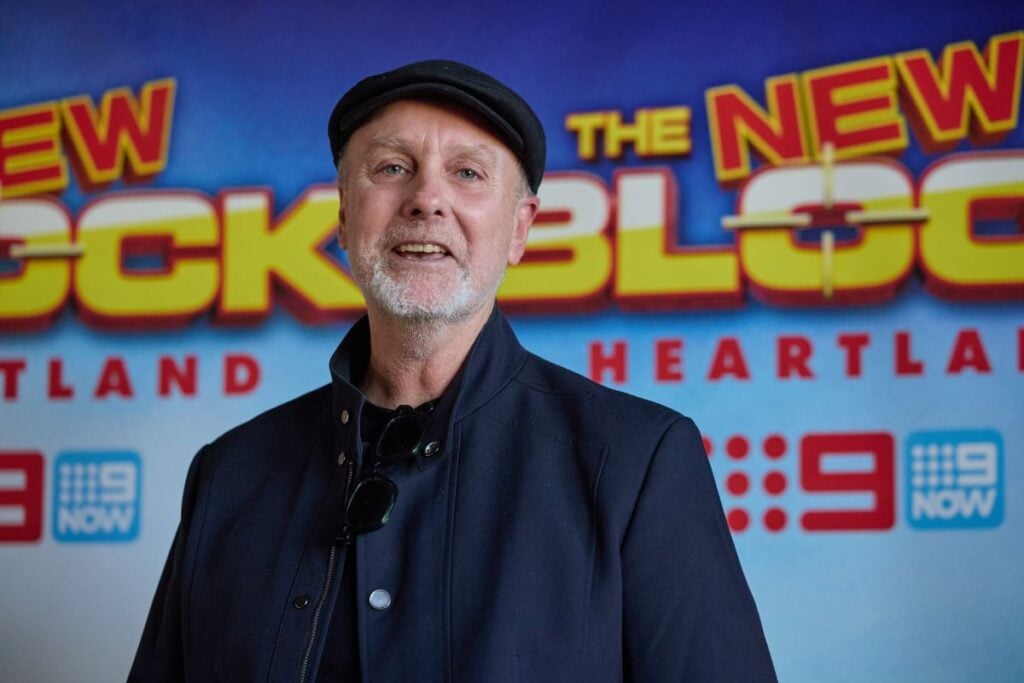After the past couple of years of authenticity being prized as the buzzword du jour of influencers, reality show contestants, and middle managers the world over, talking up authenticity seems a little tired and hacky.
But The Block is authentic.
There’s no other way of identifying why the show continues to be one of Australia’s favourite shows. Its authentic spirit is why The Block will be celebrating 1000 episodes on air midway through its upcoming 21st season. The authenticity is also why, year after year, sponsors line up to get involved with the show. The Block is very clear with the audience about its sponsor integration, with elements of that becoming defining features of the show.
Authentic sponsor integration: The holy grail
This year The Block launched its Sponsor Village Saloon, a set of branded stores right next to the set staffed by actual staff members from their respective businesses. When the renovators want a coffee, they pop over to the makeshift McDonald’s McCafe – staffed by actual McDonald’s staff.

The Block – ‘Sponsor Village’
Integrated into the Sponsor Village are new sponsors Bunnings and Chemist Warehouse, each with stores that the renovators can come and buy goods from. Other new sponsors this year include Google, MG Motor, Snooze, and Simparica Trio.
For viewers, all of the sponsors make sense. False ‘Brand X’ products would feel a bit strange for an audience to see when their lived experience is living the Bunnings Saturday morning warrior life, often popping into a McCafe on the way there.
The sponsor integrations don’t feel tacky or gross – they simply layer in further authenticity.
Obviously, the sponsors get an uplift too. Nine commissioned sports and entertainment research company Gemba to explore the audience impact of sponsor integration into The Block. It found that those brands and products featured in the show are 67% more likely to be used by Australians. Returning sponsors saw a 40% increase in consideration. It’s a compelling sales pitch.
Among sponsors returning for the 2025 season are ALDI, Arnott’s, TRUECORE® steel and COLORBOND® steel, CommBank, and Domain.
Executive producer of The Block Justin Sturzacker told Mediaweek that the aspirational spirit of the show means it can work with “the best brands in the country who are delivering the latest and greatest products to the show. That’s hugely exciting, both to us working with those brands and with those products, that we’re on the cutting edge of design. That maintains an excitement for our contestants, for our audience, and for the team working on the show.
“We’re still evolving what we can do – another exciting thing that we did this year was the sponsor village. We’ve gone off from literally having a whole village with our partners, showing their brands, but also being able to interact with those brands and serve a really useful purpose for the construction of the homes.”
The Block has a canny ability to mix the aspirational with the tangible experience of viewers, with accessible suburban brands like McDonald’s.
“You can’t plan that, really. When you’re renovating 18 hours a day, seven days a week, you need coffee, right? It’s the first place where the contestants go to. Even the great baristas have become characters inside the show now which is what I just love about the show. We have this family environment… I know every show and every production talks about that… But we are living with the contestants for the entire journey of the show, so we live with them, we eat with them, we drink coffee with them.”
Authentic hosts
There is no host on TV more authentic than former carpenter turned Australian TV legend Scott Cam. Mediaweek met him for this story and he really is as authentic as they come. He’s exactly the bloke you’re expecting to meet.
It would be great to offer Mediaweek readers a secret expose on Scott Cam – to tell you all about the secret guy you don’t see at home. The Scott Cam who loves fine art, but doesn’t care for puppies. But that’s not what you get when you meet him.
Instead, the Scott Cam Mediaweek met is a guy who has spent a few months living around Daylesford, where the current season is being filmed.He has met all the locals, eaten at all the restaurants and cafes (and yeah, he may have enjoyed a pint or two along the way), and has had a great time working on another season of the show.
“It’s a great show to work on,” Cam said. “And it’s three months of hard work. For 40 years I was a carpenter. So, it’s a lot better than being on a roof, mate. And after three months of hard work, I’ve got another nine months of… it’s not too bad. I’ve got voiceovers to do, narration, and all that for 50 episodes. But I’ve got a studio at home and I can do that at my leisure.”
Again, it will come as no surprise, but Scott Cam is a hard worker and respects those who also put in the work: “I dislike laziness. And I like hard work. I like resilience. Because I grew up in an era… I’m in my mid-sixties… I grew up in an era where you work really, really hard. That was just the norm. No one said: ‘oh mate, magic job. Well done.’ That was just standard. And you’re exhausted when you get home. And that’s what we did for many, many years.
“I love that. I loved working hard. And feeling like a beer at the end of the day.”
Scott Cam joined the show with season 3, when the show returned from a seven-year hiatus. This means he is 20-episodes short of being with it for all 1000 episodes. But with that many episodes under his toolbelt, it was worth asking if he agreed with the Malcolm Gladwell quote about it taking around 10,000 hours for someone to get good at what they do.
Scott Cam does not agree with Malcolm Gladwell.
“I’ve done 19 seasons. I disagree with that statement. The difference between an expert and a novice is doing something five times. You’re hanging a door, for example. You hang a door five times, by the fifth time you’ve got it right, because you know all the mistakes you’ve made. And so if you’re any good at anything, you do something five times, you’ll be good at it,” Cam said.
After 19 seasons of The Block and other reno shows like Backyard Blitz, where Cam says he did his apprenticeship, he has built up a relationship with the public. But, does he ever get tired of people coming up to him to talk about building?
“No, I love building. I love the building industry, and I love people that are having a go at building, and I love giving advice about it, and, you know, how to go about things. So, no, I don’t get tired of that,” he said with absolute authenticity.

Scott Cam and Shelley Craft
And that authenticity is as true of Cam as it is co-host Shelley Craft.
Almost with a sense of pride, Craft told Mediaweek about how her career has shaken her from being too precious about how she looks on screen. The Block is a show that has them filming a lot on the go, which often means they are using the light in the room.
“I gave up caring a long time ago. The beauty of starting my TV career in kids TV, where you couldn’t have any airs or graces about you and kids saw through you very, very quickly, certainly set me up for working on a show like this. Then moving on to travel shows where, again, there’s not a lot of time to spruce yourself up in the middle of the day. And they were long, long days.”
For Craft, so much of her life is wrapped up in the show. A new mother when she first joined the show in 2011, she had her daughter on site with her, along with her husband who was a cameraman on the show.
The stability of The Block has been great in her life. “As a working mom, this has been the greatest show of all time to be a part of. It’s consistent. It’s so well-organised and well-structured, and I can literally come in and do what they need me to do and then get home to my family,” she explained.
Keeping the production feeling genuine
Justin Sturzaker has been with the show since the very beginning. As executive producer, he’s responsible for keeping the show moving forward. There’s no shortage of challenges for him as he guides a team through the complexities of project managing both a TV show and a multi-property building site every year.
He’s the guy responsible for keeping the show feeling, that’s right… authentic.

Justin Sturzacker
When asked about the environmental sustainability of the production, Sturzaker had trouble answering about that exactly. As he explained, the actual TV production element of it is a small footprint compared to the rest of the project.
“As a production, because we started so small, we started with a production team of eight, and we’ve gradually grown across the years. We always have been on the leaner side,” he said.
Where the show is very conscious of the sustainability piece of it, is with the house builds themselves. Which is where the authenticity again comes into play. This isn’t a show forcing environmental responsibility onto the homes being built – instead the sustainability reflects modern housing design trends. It has it all feeling authentic to the spirit of the show.
“This year we really wanted to embrace the use of natural materials inside the build,” Sturzaker revealed. “So we partnered with a company called Wood-Mizer, and another local company which recycled timbers… trees that had fallen down in recent rain events and floods. They reclaimed that thing, and then we worked with them, and they brought out the timber, and the contestants, along with Scott, taught them how to mill their own timber.
“We always do look at it, we do have that lens, and again, obviously, it’s on the build side – The concrete for our outdoor gazebos, they’re the new robot concrete things… they’re hugely sustainable in the way that they 3D print those areas. We’ve put solar in Tesla batteries into the garages.”
A topic which journalists keep coming back to regarding the show is the show’s steadfast commitment to staying in Melbourne. The show has filmed in Sydney for some of the earlier seasons, but since season seven in 2013, the show has kept production in Melbourne.
Sturzaker says that isn’t going to change anytime soon: “We are ingrained here – on a personal level with our families and the location. We love making the show and Melbourne’s been an incredible supporter. It’s not to say that something new and interesting might not happen in the future. And to be realistic: it’s served us. Melbourne and Victoria has served us so well in delivering us different types of buildings and architecture and land that it’s allowed us to create some really incredible blocks over the years.”
